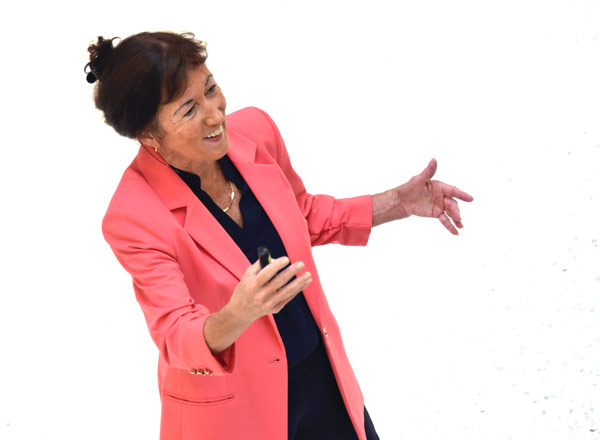The previous article in this series explored the importance of controlled innovation for AI. It shed light on the need to balance speed with control, navigate the maturity curve, and bridge the gap between prototypes and value-driven applications. In this Part 2 of the series, Nisha Advani (AVP —Cybage) and Jennifer Vessels (CEO—Next Step) are joining me to discuss the idea of leveraging existing pockets of innovation within an organization and integrating pre-existing efforts.
Catching Up Through Backward Governance
Technological advancements usually precede regulations and legislation. By nature, innovation doesn’t always follow a structured process. Organizations continuously refine and develop their governance framework as technology matures and capabilities evolve. Such ‘adaptive governance’ frameworks often come after the solutions have been created, even in the case of AI.
Nisha Advani says, “Our conversations with leaders from numerous organizations have revealed this new challenge. Ultimately, all this great work needs to come together, and people need to be empowered to share their knowledge and learnings across the organization. The challenge lies in unifying these fragmented efforts.” But the good news is that this represents a buzzing potential innovation network.
Our first step should be to identify existing Gen AI initiatives, prioritizing and consolidating them to avoid redundancies. The goal is to create a collaborative environment where knowledge and best practices are openly shared. Introducing thoughtful pathways and connecting these patches allows us to create a harmonious and flourishing landscape where innovation thrives seamlessly.
Reiterating the points from our last article, we need to empower knowledge-sharing and collaboration across the organization. Governance helps bridge the gap between experimentation and real-world applications. While structured processes are ideal, innovation often flourishes before formal frameworks exist. This is especially true for Gen AI, whose rapid development cycle leads to scattered pockets of experimentation within organizations.
As a result, leaders are also cautious about how much they govern and/or mandate so as to be viewed as enablers rather than blockers in the innovation pipeline. Of course, effective governance isn’t about stifling innovation. Instead, a value-driven framework incentivizes participation and collaboration, providing resources and expertise.
Redundancies are inevitable. However, identifying overlaps in functionalities and approaches can be a good starting point. Can these be streamlined? Businesses will need to clearly explain the intent behind their governance strategy and processes. Teams embarking on independent innovation journeys might perceive governance as a hindrance, but proactive communication about ongoing initiatives will naturally reduce redundancies. A central group, acting as a champion of ideas, could facilitate these interactions and ensure collective buy-in from all stakeholders. This would also mean that existing projects can be leveraged as templates to accelerate future initiatives!
Learning to Work with AI
Now is an opportune moment to accelerate innovation cycle. The key lies in embracing a “human-AI symphony” approach, a philosophy Cybage wholeheartedly supports. While conversations around Generative AI (Gen AI) often spark anxieties about job displacement, a more nuanced perspective is needed. Elon Musk was recently quoted as saying all jobs would be lost to AI, but I don’t think things are as dire as that.
Yes, certain tasks, particularly in auditing and billing, might become more automated. However, let’s view this not as a do-or-die situation but as an opportunity to redefine what it means to be a knowledge worker in the Gen AI era. Nisha agrees, “There is a reason the word ‘artificial’ is there. AI will only take over where it is easy for it to take over. As a society and ecosystem, we need to consider the shift in balance and what needs to be added instead of deleted (from our curriculum and training). It percolates into the education system. But yes, speed is of the essence!”
The future of work with Gen AI is not about replacing humans but about creating a more collaborative and productive work environment. Jennifer Vessels: “History offers valuable lessons. The mechanization revolution didn’t eliminate the need for human workers; it transformed their roles. Similarly, Gen AI won’t replace knowledge workers but rather augment their capabilities.” This is apparent in the job marketplace already, with new skills, such as “prompt engineering” for Gen AI tools, already emerging in job descriptions.
Even Jamie Dimon, CEO of JPMorgan Chase, has likened the potential impact of AI innovation to the invention of the internet, suggesting a ripple effect far beyond the business world. This reinforces the importance of taking a proactive approach to ensure Gen AI is harnessed for good.
The bonus falls on both individuals and organizations to prepare for this future. By learning to collaborate effectively with Gen AI, we knowledge workers can unlock a new level of productivity and innovation. To start with, we need educational systems that can evolve to equip young people with the critical thinking, problem-solving, and adaptability skills crucial for thriving in a Gen AI-powered world.
As for the current workforce, Jennifer advises, “Companies must transparently communicate the impact of Gen AI and invest in upskilling programs to help employees adapt and acquire the necessary skillsets.” Redefining job descriptions to reflect the changing landscape is essential. New descriptions should highlight the skills needed to effectively collaborate with Gen AI tools.
The impact of Gen AI on the future of work and innovation is a complex and evolving conversation. By proactively equipping both our workforce and our processes with a human-centric approach, we can ensure that Gen AI becomes a powerful tool for progress and shared prosperity!


